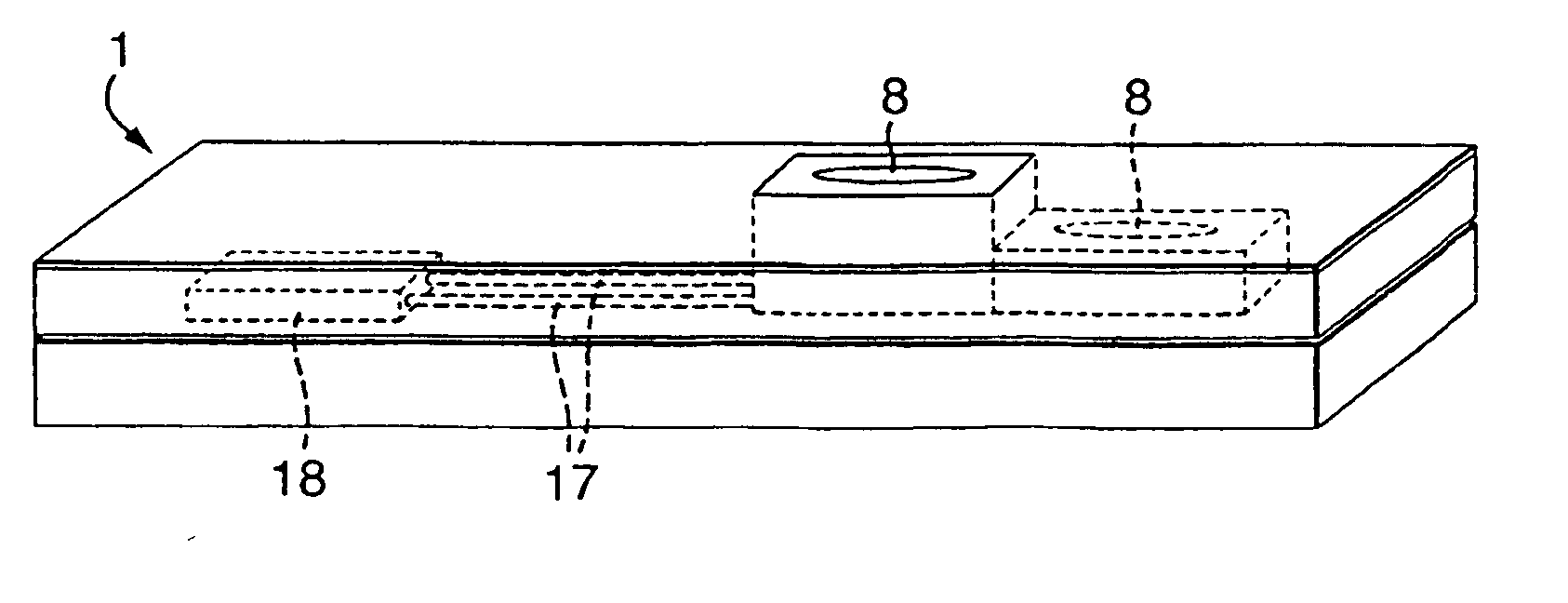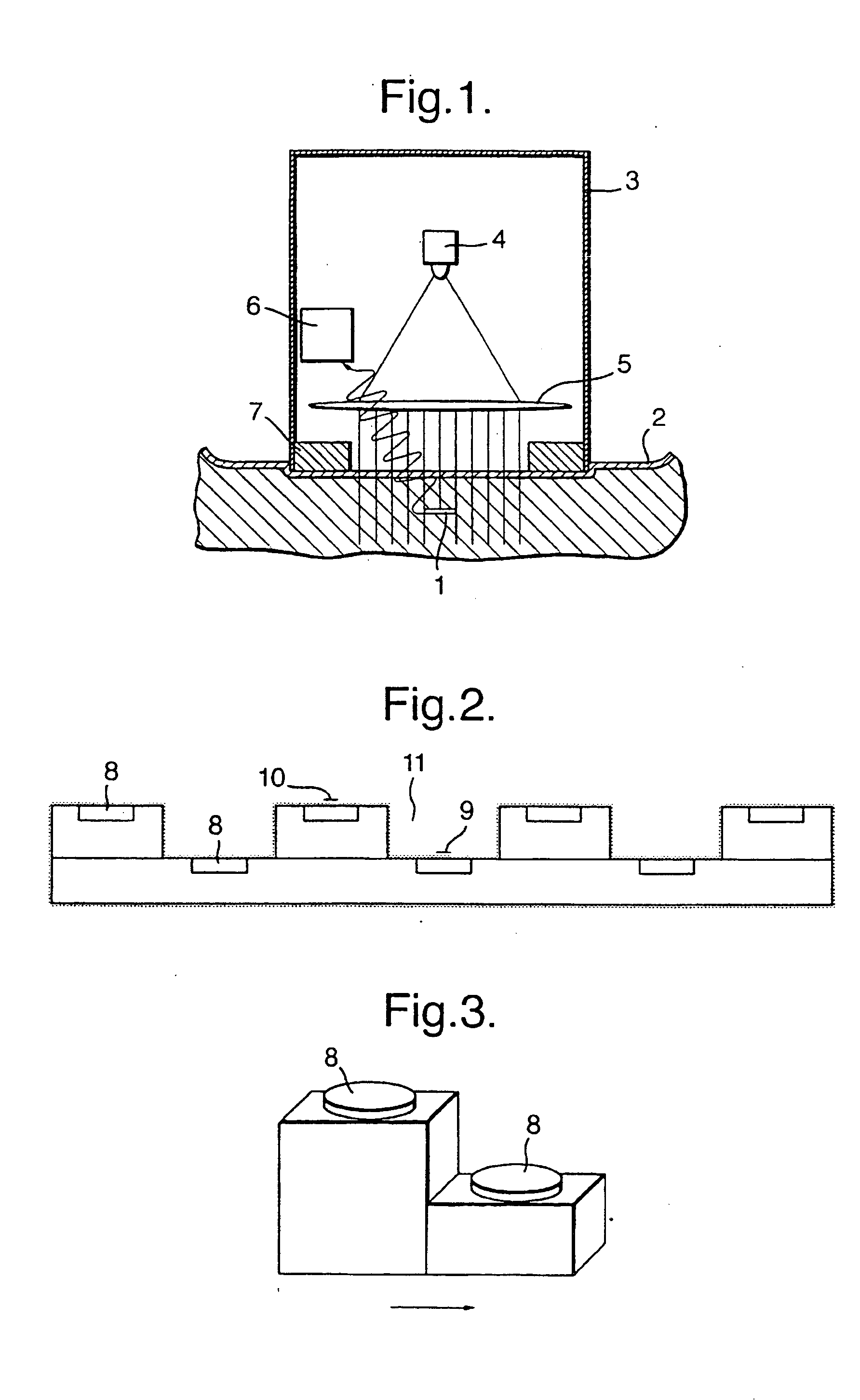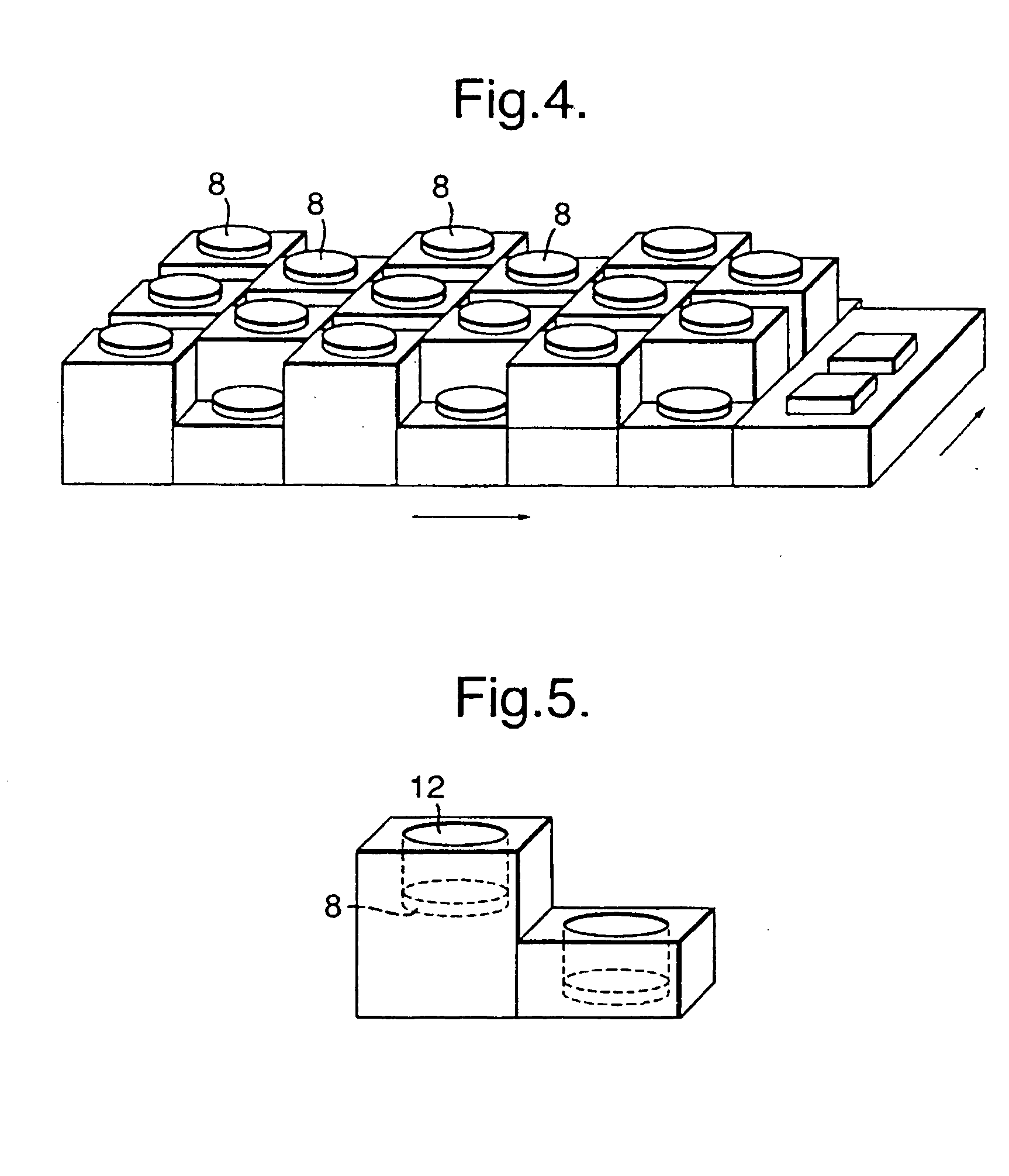Method and device for monitoring analyte concentration by optical detection
an optical detection and analyte technology, applied in the field of biological sensors, can solve the problems of inconvenient patient taking blood samples, difficulty in satisfactory measurement, and inability to take blood samples, and achieve the effect of reducing the influence of bio fouling on the value of measured signals
- Summary
- Abstract
- Description
- Claims
- Application Information
AI Technical Summary
Benefits of technology
Problems solved by technology
Method used
Image
Examples
Embodiment Construction
[0055] In the illustrated embodiments of the invention, optical methods based on the interaction of light with compounds and body tissues are utilised. The optical methods in their general aspects correspond to those described in the literature, for example, using Beer-Lambert law and / or radiative transport theory and will not therefore be described further here.
[0056] In the illustrated embodiments of the invention, light from a light source is incident on an implanted detector, the light is detected by a detection device in the implanted detector, and a signal is transmitted to a receiving device for analysis. The characteristics of the detected light depend on the interaction with the compounds encountered on the way from the light source to the detector.
[0057] In the illustrated embodiments of the invention, the implanted detector is divided into areas at different levels, so that the distance for the light through the compounds, and thus the interaction with light, varies fro...
PUM
| Property | Measurement | Unit |
|---|---|---|
| biocompatible | aaaaa | aaaaa |
| area | aaaaa | aaaaa |
| areas | aaaaa | aaaaa |
Abstract
Description
Claims
Application Information
 Login to View More
Login to View More - R&D
- Intellectual Property
- Life Sciences
- Materials
- Tech Scout
- Unparalleled Data Quality
- Higher Quality Content
- 60% Fewer Hallucinations
Browse by: Latest US Patents, China's latest patents, Technical Efficacy Thesaurus, Application Domain, Technology Topic, Popular Technical Reports.
© 2025 PatSnap. All rights reserved.Legal|Privacy policy|Modern Slavery Act Transparency Statement|Sitemap|About US| Contact US: help@patsnap.com



